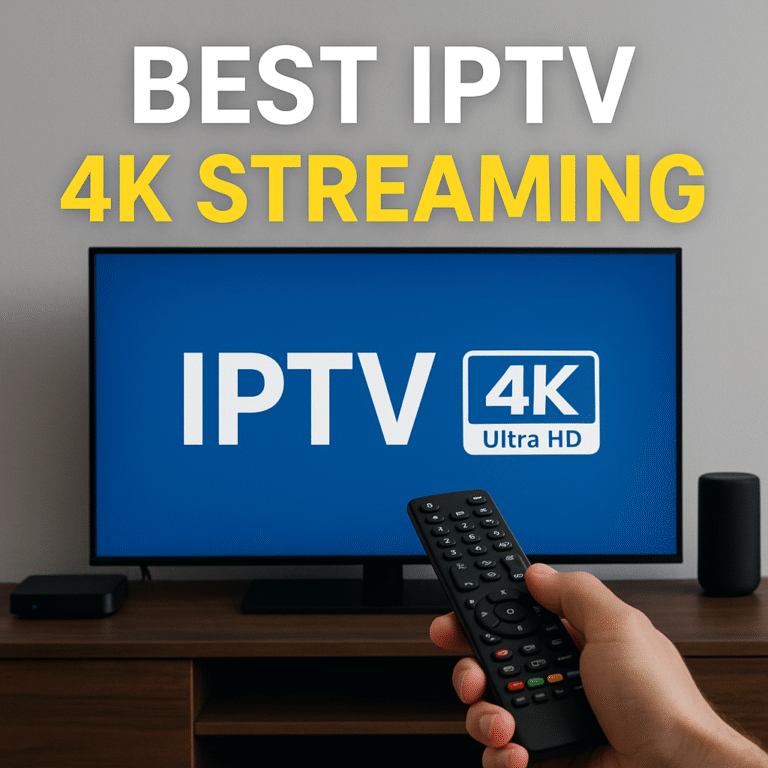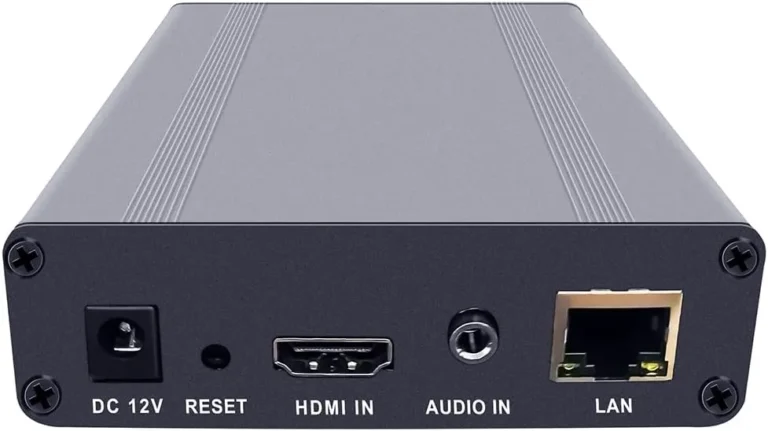Best VeCASTER IPTV Encoders in 2025: Reliable Streaming Made Easy
Are you looking to stream high-quality video content over IP networks but feeling overwhelmed by the technical options? VeCASTER IPTV encoders have become industry favorites, but choosing the right model can be challenging. This comprehensive guide will walk you through everything you need to know about VeCASTER IPTV encoders, from understanding the technology to comparing the top models available in 2025.
Table of Contents
Introduction
VeCASTER IPTV encoders are specialized hardware devices that convert video signals from sources like cameras, computers, or media players into digital streams that can be transmitted over IP networks. As streaming technology continues to evolve, these powerful encoders have become essential tools for businesses, content creators, and institutions looking to distribute video content efficiently.
The growing popularity of IPTV solutions across industries has made VeCASTER IPTV encoders increasingly important. Whether you’re in hospitality wanting to deliver TV channels to hundreds of rooms, an educational institution broadcasting lectures, or a house of worship sharing services with remote congregants, choosing the right encoder is crucial for success.
Many professionals find themselves confused by the technical specifications, feature sets, and price points of different VeCASTER models. That’s why we’ve created this comprehensive guide to help you navigate the options and select the perfect VeCASTER IPTV encoder for your specific needs.
Section 1: Understanding VeCASTER IPTV Encoders
What is a VeCASTER IPTV Encoder?
A VeCASTER IPTV encoder is a specialized device that converts audio and video signals from traditional sources (HDMI, SDI, component) into digital streams that can be transmitted over IP networks. These encoders are essentially the bridge between your content sources and your IPTV distribution network.
Unlike generic video encoders, VeCASTER IPTV encoders are specifically designed for IPTV implementations, offering features like low-latency streaming, multicast support, and compatibility with various streaming protocols that make them ideal for professional broadcasting and content distribution.
How Does It Work?
The encoding process involves several key steps:
- Input: The VeCASTER IPTV encoder receives audio and video signals from your source device through connections like HDMI or SDI.
- Encoding: The device compresses the raw video and audio data using codecs such as H.264 or H.265/HEVC, significantly reducing file size while maintaining quality.
- Packaging: The compressed data is then packaged into a streaming format compatible with your chosen protocol (RTMP, HLS, RTSP, etc.).
- Transmission: Finally, the packaged stream is sent over your IP network to viewers’ devices or to a content distribution system.
This entire process happens in real-time, allowing for live broadcasting with minimal delay depending on the model and configuration.
Why Use a VeCASTER Encoder?
VeCASTER IPTV encoders offer numerous advantages over other solutions:
- Cost-effectiveness: Eliminates the need for expensive coaxial cabling infrastructure
- Scalability: Easily add more viewers without significant additional investment
- Flexibility: Distribute content to various devices across multiple locations
- Quality control: Adjust encoding parameters to balance quality and bandwidth
- Integration: Works seamlessly with existing IT infrastructure
- Management: Centralized control of content distribution
Common Use Cases
VeCASTER IPTV encoders shine in various applications:
- Hospitality: Delivering TV channels to hotel rooms over the existing network infrastructure
- Healthcare: Broadcasting informational content to patient rooms and waiting areas
- Education: Streaming lectures, events, and announcements across campus
- Corporate communications: Distributing company-wide meetings and training videos
- Digital signage: Powering content for multiple display screens
- Houses of worship: Sharing services with remote or overflow congregations
- Sports venues: Providing multiple camera angles and replays to spectators
Section 2: Key Features to Consider When Choosing a VeCASTER IPTV Encoder
Resolution (4K vs. 1080p)
The resolution capability of your VeCASTER IPTV encoder is a critical consideration:
1080p (Full HD):
- Sufficient for most standard applications
- Requires less bandwidth (typically 2-8 Mbps per stream)
- More affordable encoder options
- Compatible with a wider range of viewing devices
4K (Ultra HD):
- Four times the resolution of 1080p
- Provides exceptional detail for large screens
- Requires significantly more bandwidth (15-25 Mbps per stream)
- Future-proof investment as 4K adoption increases
- Ideal for applications where image detail is crucial
When deciding between a standard HDMI encoder IPTV solution and a 4K IPTV encoder, consider your viewing devices, available bandwidth, and whether the enhanced detail justifies the additional cost.
Input/Output Options
Different VeCASTER IPTV encoder models support various input types:
HDMI:
- Most common and versatile input type
- Supports both consumer and professional equipment
- Carries both audio and video signals
- HDMI encoder IPTV options are widely available across price ranges
SDI (Serial Digital Interface):
- Professional-grade connection used in broadcast environments
- Supports longer cable runs without signal degradation
- Available in different standards (SD-SDI, HD-SDI, 3G-SDI, 12G-SDI)
- Typically found on higher-end encoder models
Component/Composite:
- Legacy analog connections
- Useful for incorporating older equipment
- Lower quality than digital inputs
- Available on specialized encoder models
Multiple Inputs:
- Some encoders support multiple input types or even multiple sources
- Provides flexibility and redundancy
- Higher cost but greater versatility
Encoding Formats
The encoding format determines the efficiency and compatibility of your stream:
H.264 (AVC):
- Industry standard with wide compatibility
- Good balance of quality and bandwidth efficiency
- Supported by virtually all streaming platforms and devices
- Ideal for most standard applications
H.265 (HEVC):
- Next-generation codec with superior compression
- Approximately 50% more efficient than H.264
- Essential for 4K streaming with reasonable bandwidth
- Requires more processing power and newer receiving devices
- Found in premium VeCASTER IPTV encoder models
Bitrate Control
How your encoder manages data transmission rates affects stream quality and stability:
Constant Bitrate (CBR):
- Maintains the same bitrate regardless of content complexity
- Provides predictable bandwidth usage
- Better for networks with fixed bandwidth limitations
- May waste bandwidth on simple scenes
Variable Bitrate (VBR):
- Adjusts bitrate based on content complexity
- More efficient use of available bandwidth
- Better overall quality for the same average bitrate
- May cause issues on networks with strict bandwidth limits
The best VeCASTER IPTV encoders offer both options and allow fine-tuning of parameters.
Streaming Protocols
Different distribution scenarios call for different streaming protocols:
RTMP (Real-Time Messaging Protocol):
- Low latency (1-3 seconds)
- Compatible with many streaming platforms
- Good for interactive applications
- Limited by some firewalls
HLS (HTTP Live Streaming):
- Highly compatible (works over standard HTTP)
- Adaptive bitrate capabilities
- Higher latency (5-30 seconds)
- Ideal for wide distribution
RTSP (Real-Time Streaming Protocol):
- Very low latency
- Efficient for local network distribution
- Common in security and surveillance applications
SRT (Secure Reliable Transport):
- Designed for unreliable networks
- Encrypted transmission
- Low latency with error correction
- Increasingly important for professional applications
Management and Control
The interface and management capabilities can significantly impact usability:
- Web Interface: Look for intuitive browser-based management
- Remote Management: Ability to control the encoder from anywhere
- API Support: Enables integration with other systems
- Presets: Saves time when configuring for different scenarios
- Monitoring Tools: Helps identify and resolve issues quickly
Budget Considerations
VeCASTER IPTV encoders range from a few hundred to several thousand dollars:
- Entry-level ($300-800): Basic encoding capabilities, typically HDMI input, H.264 only
- Mid-range ($800-1500): Multiple inputs, H.265 support, more streaming protocols
- Professional ($1500-3000+): 4K support, redundancy features, advanced management
Balance your immediate needs with future requirements when setting your budget.
Section 3: Top VeCASTER IPTV Encoder Models (2025)
Disclaimer: Information listed may or may not be up to date. Please view the manufacturers’ websites for current information.
VeCASTER Mini Plus
Pros:
- Compact, portable design
- Easy setup with minimal technical knowledge
- Reliable 1080p HDMI encoding
- Affordable entry point for small operations
- Low power consumption
Cons:
- Limited to H.264 encoding
- Single HDMI input only
- No redundancy features
- Basic management interface
Best For: Small businesses, houses of worship, and educational institutions getting started with IPTV.
Price Range: $450-550
VeCASTER Pro HD Dual
Pros:
- Dual HDMI inputs for redundancy or multi-source streaming
- Professional-grade 1080p encoding quality
- Supports both H.264 and H.265 encoding
- Multiple streaming protocols (RTMP, HLS, RTSP, UDP)
- Comprehensive web management interface
Cons:
- No 4K support
- Higher power consumption
- Steeper learning curve for configuration
- No built-in transcoding
Best For: Medium-sized operations requiring reliability and flexibility.
Price Range: $950-1200
VeCASTER 4K IPTV Encoder Ultra
Pros:
- True 4K UHD encoding capability
- Advanced H.265/HEVC encoding for bandwidth efficiency
- Multiple input options (HDMI, SDI)
- Comprehensive protocol support including SRT
- Robust metal chassis with effective cooling
- Advanced scheduling and automation features
Cons:
- Premium price point
- Complex setup for advanced features
- Requires more network bandwidth
- Larger form factor
Best For: Professional broadcasting, large venues, and premium content providers where image quality is paramount.
Price Range: $1800-2200
VeCASTER Enterprise Multi-Channel
Pros:
- Handles up to 4 independent channels simultaneously
- Mixed input support (HDMI, SDI, Component)
- Redundant power supplies
- Advanced management system with API integration
- Support for closed captioning
- Failover protection features
Cons:
- Highest price point in the range
- Requires rack mounting
- Significant power requirements
- Needs professional configuration
Best For: Enterprise-level deployments, broadcast facilities, and large-scale IPTV systems.
Price Range: $3000-4500
Section 4: VeCASTER 4K IPTV Encoder Options
Benefits of 4K Encoding
The VeCASTER 4K IPTV encoder models offer several distinct advantages:
- Exceptional detail: Critical for large displays and applications where fine detail matters
- Future-proofing: As 4K adoption increases, your content remains relevant
- Downscaling options: Generate multiple resolution versions from a single high-quality source
- Better chroma sampling: Many 4K encoders offer 4:2:2 or 4:4:4 sampling for superior color reproduction
- HDR compatibility: Some 4K models support High Dynamic Range for enhanced contrast and color
Top VeCASTER 4K Models
Several VeCASTER models excel in the 4K IPTV encoder category:
- VeCASTER 4K IPTV Encoder Ultra: The flagship model with comprehensive features
- VeCASTER 4K Compact: A smaller form factor option without sacrificing core 4K capabilities
- VeCASTER 4K Enterprise: Designed for integration into larger systems with redundancy features
Addressing 4K Challenges
While 4K encoding offers superior quality, it comes with challenges:
Bandwidth Requirements:
- 4K streams typically require 15-25 Mbps per stream
- Consider network infrastructure upgrades if necessary
- Utilize H.265/HEVC encoding to reduce bandwidth needs by up to 50%
Cost Considerations:
- Higher initial investment for 4K-capable encoders
- Additional storage costs for recorded content
- Potential network infrastructure upgrades
Compatibility:
- Ensure viewing devices support 4K resolution
- Verify compatibility with H.265/HEVC decoding
- Test across your distribution network before full deployment
Section 5: Troubleshooting Common VeCASTER IPTV Encoder Issues
Even the best VeCASTER IPTV encoder solutions can encounter issues. Here are solutions to common problems:
Video Quality Issues
- Pixelation or blocking: Increase bitrate or switch to more efficient codec
- Color inconsistencies: Check input source settings and encoder color space configuration
- Blurry image: Verify source resolution matches encoder settings
- Frame drops: Reduce resolution or bitrate if network bandwidth is insufficient
Connectivity Problems
- Stream not visible: Verify network connectivity and firewall settings
- Intermittent disconnections: Check for network congestion or interference
- High latency: Consider switching to a lower-latency protocol like RTMP or SRT
- Multicast issues: Ensure network switches support IGMP snooping
Audio Synchronization
- Audio/video out of sync: Adjust audio delay settings in the encoder
- No audio: Check audio input connections and volume levels
- Distorted audio: Reduce audio bitrate or change audio codec
Overheating and Hardware Issues
- Encoder shutdowns: Ensure proper ventilation and cooling
- Unreliable operation: Update firmware to latest version
- Input detection failures: Try alternative cables or input sources
Conclusion
Selecting the right VeCASTER IPTV encoder is crucial for the success of your video distribution system. By understanding the key features and comparing them against your specific requirements, you can make an informed decision that balances performance, features, and budget.
Remember to consider:
- The resolution requirements of your content and viewing devices
- Input/output compatibility with your existing equipment
- Encoding formats that balance quality and bandwidth efficiency
- Management features that align with your technical capabilities
- Budget constraints while accounting for future needs
The VeCASTER IPTV encoder lineup offers solutions for virtually every scenario, from small single-channel operations to large enterprise deployments. By choosing the right model, you’ll ensure reliable, high-quality video distribution that meets your organization’s needs both today and in the future.

Call to Action
Have you implemented a VeCASTER IPTV encoder in your organization? We’d love to hear about your experience in the comments below. If you’re still unsure which model best fits your needs, let us know your requirements, and we’ll help guide your decision.
For more information about IPTV technologies, check out our related articles on HDMI encoder IPTV setups and 4K streaming best practices. You can also visit VeCASTER’s official website for the most up-to-date product specifications and pricing.







